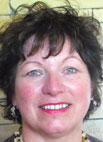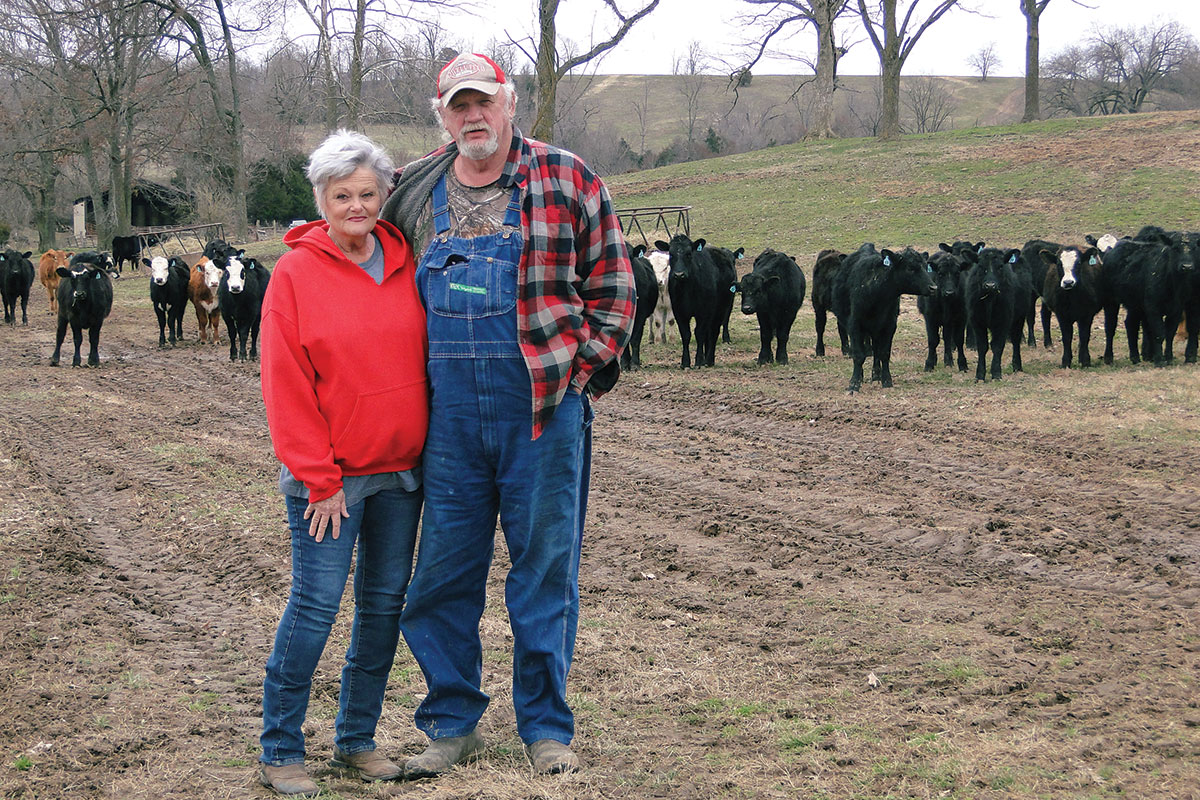
Richard and Susan Gebhart’s family raises Hereford cattle near Grand Lake in rural Langley, Okla., on land Susan’s great-grandparents settled in 1907.
Susan’s family had allotments in Indian Territory because of their Cherokee heritage and her great-grandfather John Millikan bought land to add to it. The ranch has grown from the original 160, to 320 acres.
Susan’s grandfather Floyd Sloan raised commercial beef cattle and dairy-farmed with his wife Wilma until they opted in the early 1960s to raise registered Herefords. Richard and Susan returned to the land a few years ago and continued raising the breed.
“They have a lot of traits that are time-honored and valued and should be important to everybody,” Susan said.
One of those, she said, is efficiency. Herefords don’t require a lot of inputs to consistently produce a calf each year, and they are efficient in the feeding pen too, she said.
Family Project
The Gebharts’ daughter Erica, son-in-law Matt Boyer and granddaughter McKenzie live on the homestead. The old farmhouse has been razed except for the storm cellar.
Family members hold jobs while also keeping tabs on about 100 registered cattle.
Richard teaches statistics and college business at the University of Tulsa. He, Susan and younger daughter Roxane live in Claremore. Roxane, Erica and Matt all hold animal science degrees from Oklahoma State University, Stillwater, Okla. Matt teaches agriculture and is the FFA adviser at Claremore High School. Erica and Susan work for a company that organizes events and seminars for medical doctors. They work out of their home, but also do some traveling.
Family Background
Susan did not grow up on the homestead, but made visits each summer from South Carolina, where her father worked as a chemical engineer, to help at the ranch.
She and Richard, who grew up in Fort Smith, Ark., met as students at the University of Arkansas, Fayetteville, Ark., where Richard earned a bachelor’s degree in political science. After several active Army assignments, they ended up in Starkville, Miss., where Richard taught R.O.T.C. and completed his master’s degree in agricultural economics and animal science at Mississippi State University; Susan earned her bachelor’s degree in home economics. Richard also has an MBA from Syracuse University and a J.D. from the University of Tulsa.
The Gebharts stay on top of OSU farming expertise, keeping a watchful eye on herd health, fertility, breeding, weaning and nutrition.
Among practices the Gebharts use are rotational grazing, clipping pasture fescue stems to prevent pink eye, standing forage, artificial insemination and embryo transfer. They grow their own native hay and raise nearly all of their replacement heifers.
Their breeding program includes both fall and spring calving. The Gebharts strive for March/April and September/October calves.
Two bulls are kept to cover cows after two sessions of artificial insemination each season. They are kept with females for about 40 days.
Calves are pre-weaning vaccinated and stay with their mothers for three weeks before they receive boosters and are weaned. At weaning they are separated from their moms by fence, but can still see them, a technique called fenceline weaning. They are also fed for a few weeks before weaning and are “bunk-broke” before they are weaned. Doing it this way, Susan said, “diminishes a lot of stress.”
Involvement
Susan said she thinks continued youth involvement in agriculture is very important.
“Everybody in this family has such a strong belief in kids in agriculture that we all have something to do with those kinds of programs and groups,” she said.
For instance, she, Richard and their daughters do volunteer work for the Tulsa State Fair, Oklahoma Club Calf Association and Oklahoma Hereford Association.
Roxane recently ended a term on the board of the National Junior Hereford Association. Richard is past director for the Oklahoma Cattlemen’s Association.
Susan is the junior show heifer superintendent, while Richard is the open and junior show Hereford superintendent at the Tulsa State Fair.
Balanced approach
The Gebharts take a balanced approach to breeding, watching for trends, but also breeding for what they think makes the best animal.
Susan says that there are always going to be trends in breeding cattle so the balanced approach is needed; not focusing on one or two traits.
Working for traits that match your environment and lifestyle also are important, Richard said.
What they like about Herefords is that they match their lifestyle in terms of efficiency, disposition and economic viability.
“They just go out there and do their jobs,” Susan said.







